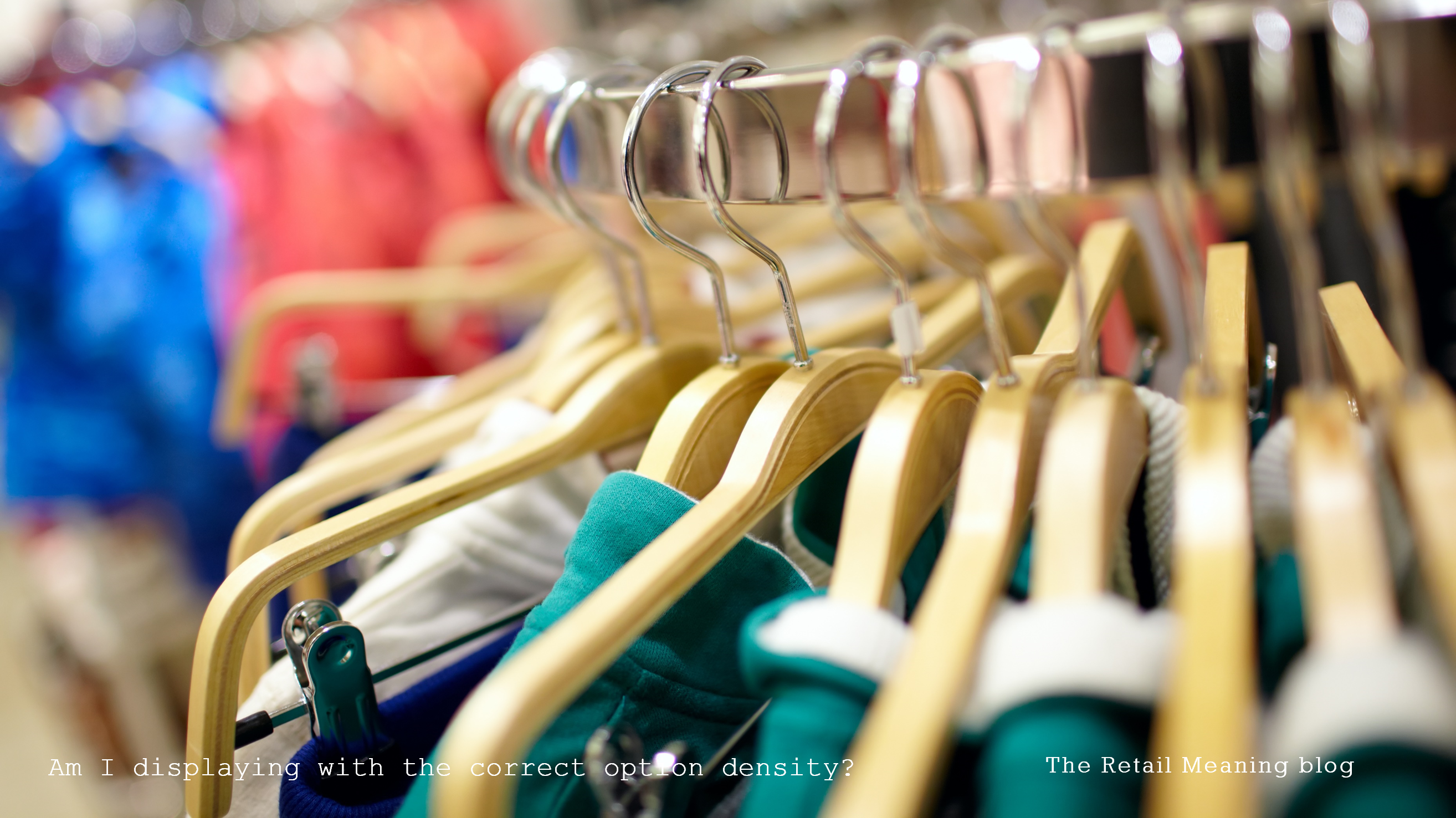Am I displaying with the correct option density?
How to have your cake and eat it!
Some of the most obvious questions are often the hardest to answer, or to be more accurate it would seem, are the ones that no one wants to answer.
The repercussions of this “small question” are very great for a number of functions within a retail business and though ultimately the answer may prove favourable to the majority, if not all, it still remains an irony that in such dynamic businesses, change itself is not generally that welcome.
The benefits of displaying at the correct density are equally great, in terms of performance and profit, in terms of management & logistics, in terms of buying & merchandising and in terms of visual merchandising and store operations. If we reduce the 2 fundamental questions – “how much?” and “what?” down to “what?” our retail lives certainly become simpler.
So why such an important question?
The correct option density defines the capacity of stores and so is at the heart of the total assortment plan and budget for any retailer. If we are sure of our total capacity it defines the number of pieces we need in the business. Of course how we cut the cake by category, by colour, by brand is another story and the next level of expertise but we work at least in the comfort of knowing how big the cake is.
Unlike the real world of cakes, speaking personally of course, generally the smaller the cake the better in that it is more manageable, less time consuming and inexpensive to make, but almost always is richer, more flavoursome and essentially the correct density.
And the correct density of store display is what satisfies the customer. It offers enough choice and variety to be interesting and authoritative whilst being easy to digest and tempting enough for the customer to invest in. Displaying stores with the correct density and so with the correct capacity is not just about making life simple and easy for the retailer, despite the fact it will do, but in that it drives maximum sales performance whilst minimizing wastage, markdown and reduced margin & profit.
So how to find the answer of correct density for categories or departments in any retailer?
As with all simple questions the simple answer should be defined from both looking inwards and watching outwards. The combination of careful informed analysis of sales performance related to store densities and capacities combined with an informed study of the practices of highly successful competitors and benchmarks will lead the way to the answers we seek.
The repercussions and benefits will drive decisions in space planning, product allocation, store grading, assortment segmentation, product blocking and assortment structure planning, enhancing actions in store design, visual display and customer experience delivery.
Now who says you can’t have your cake and eat it? Just make sure you define the correct recipe and meticulously measure the ingredients
Is display density still a mystery in your business?
Are you possibly over-cooking the assortment ingredients?
We have developed the “Space Planning & Visual Merchandising Audit” and worked with it across a range of retail businesses to not only define their optimum display densities but also to develop the correct procedures for a variety of related areas such as assortment structure planning, store grading, store operations and visual merchandising.
For more information…
